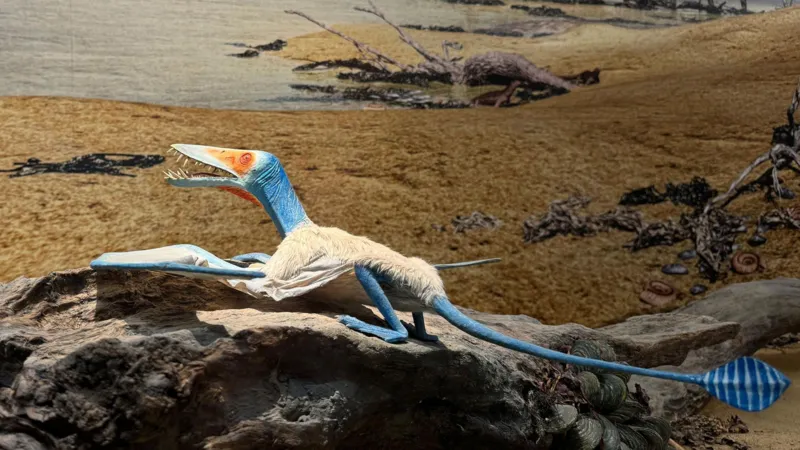The “smoking gun” evidence for the diets, according to researcher Dr. Roy Smith, was stomach contents found in fossils.
Scientists from the Staatliches Museum fur Naturkunde Stuttgart in Germany and the University of Portsmouth produced the discoveries, which were then published in the Journal of Vertebrate Paleontology.
The wingspans of pterosaurs, which lived 182 million years ago, could reach up to 12 meters (39 feet).
Two pterosaur species, Dorygnathus and Campylognathoides, had their stomach contents fossilized and examined by the scientists.
They were located in present-day southwest Germany and lived during the early Jurassic period.
They discovered that campylognathoides consumed ancient squid as their final meal, but dorygnathus consumed little fish.
PA An artwork in black and white showing the pterosaur Campylognathoides using its mouth to pluck a squid from the sea.PA
According to Dr. Smith of Portsmouth University’s School of Environment and Life Sciences, “180 million-year-old pterosaurs remain with them.







